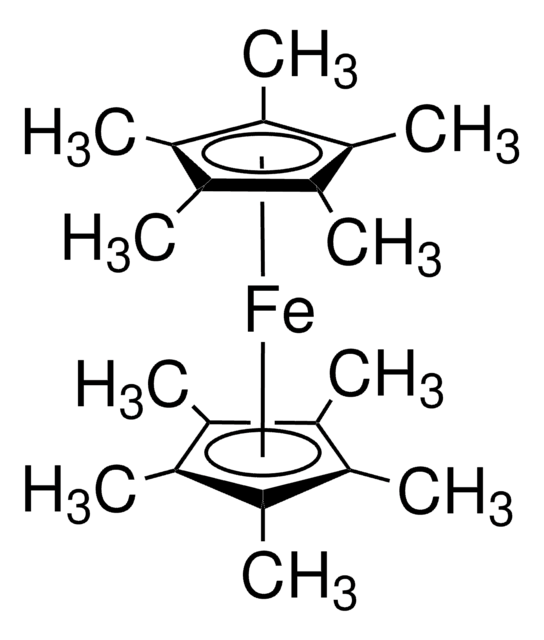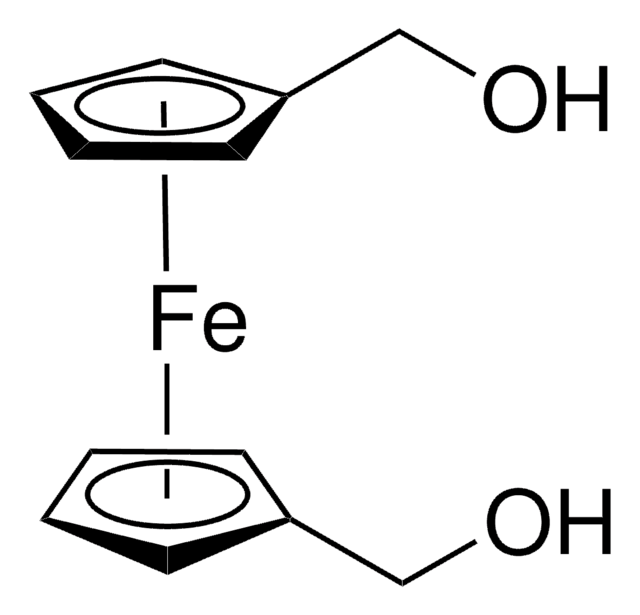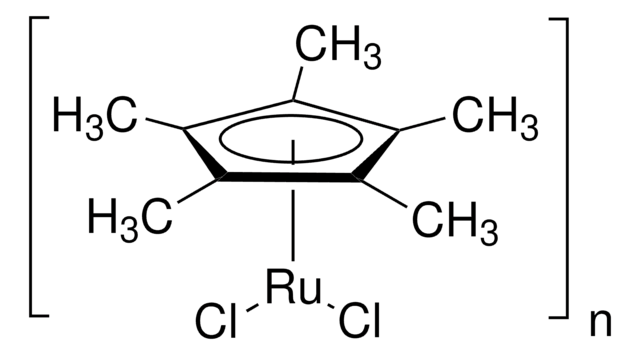303690
Hexaammineruthenium(II) chloride
99.9% trace metals basis
Sinónimos:
Ruthenium(III) chloride hexaammoniate
About This Item
Productos recomendados
assay
99.9% trace metals basis
form
solid
reaction suitability
reagent type: catalyst
core: ruthenium
impurities
≤1500.0 ppm Trace Metal Analysis
solubility
H2O: slightly soluble(lit.)
storage temp.
2-8°C
SMILES string
N.N.N.N.N.N.[Cl-].[Cl-].[Ru++]
InChI
1S/2ClH.6H3N.Ru/h2*1H;6*1H3;/q;;;;;;;;+2/p-2
InChI key
SHHNQLHKJVODTN-UHFFFAOYSA-L
General description
signalword
Warning
Hazard Classifications
Acute Tox. 4 Oral - Eye Irrit. 2 - Skin Irrit. 2 - STOT SE 3
target_organs
Respiratory system
Storage Class
11 - Combustible Solids
wgk_germany
WGK 3
flash_point_f
Not applicable
flash_point_c
Not applicable
ppe
dust mask type N95 (US), Eyeshields, Gloves
Certificados de análisis (COA)
Busque Certificados de análisis (COA) introduciendo el número de lote del producto. Los números de lote se encuentran en la etiqueta del producto después de las palabras «Lot» o «Batch»
¿Ya tiene este producto?
Encuentre la documentación para los productos que ha comprado recientemente en la Biblioteca de documentos.
Los clientes también vieron
Artículos
Hydrogen is one of the most important resources in providing food, fuel, and chemical products for our everyday life. Sustainable catalytic hydrogen production from bioethanol has gained significant attention in recent years due to globally diminishing fossil fuel supplies, which have necessitated the search for new chemical feedstocks.
Nuestro equipo de científicos tiene experiencia en todas las áreas de investigación: Ciencias de la vida, Ciencia de los materiales, Síntesis química, Cromatografía, Analítica y muchas otras.
Póngase en contacto con el Servicio técnico














